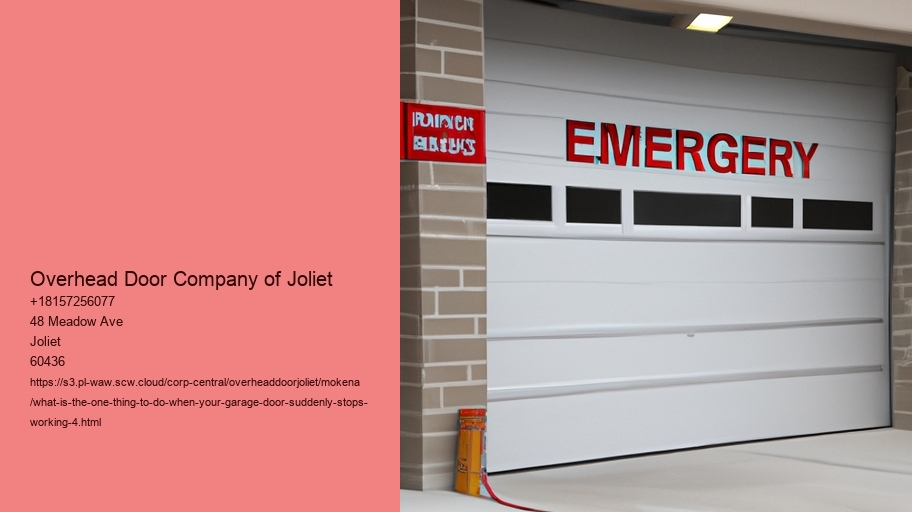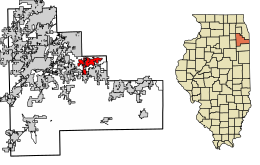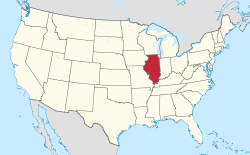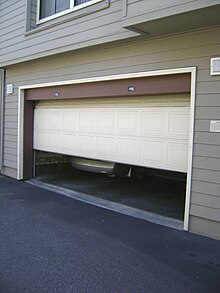What kind of garage door Opener and Door Do You Have? .
It is important to know the kind of garage door and opener you own before you begin troubleshooting.
Garage doors generally fall into several categories according to their design and operation.The most popular varieties are roll-up, sectional, and tilt-up doors.Sectional doors are made of panels that are joined by hinges that allow the door to bend as it closes and opens on a vertical track.Roll-up doors, often found in commercial environments, are constructed from the slats which roll into coils.
The tilt-up door on the contrary, is a solid, single piece that opens by tilting inward and upward.Belt-drive garage door openers have a lower noise however, they employ a rubber band rather than a chain. They're an excellent choice for attached garages. Garage door openers with screw-drive make use of a rod made of steel for moving the garage door. This is the perfect option for noise and cost.
The next thing to do is to inspect your garage door opener and identify the type. Make sure to check the plug and breaker to ensure that the opener is operating. Inspect the manual release cable to be sure that it hasn't been pulled. This will cause the door to become disconnected from the opener. Inspect the rollers and tracks of the door to determine if there are damage or obstructions and remove any debris.
Lubricate moving parts if necessary in order to prevent lubrication issues. can cause sticking or jamming.If the door still doesn't operate, think about resetting your opener.This will often fix electronic issues or faults.Consult the manual for your opener to find specific reset instructions, as the process may differ between models.Many modern openers feature a reset button, whereas others require disconnecting the plug and plugging it back in.
In some instances it could be more complicated for instance, a damaged spring or a motor that is worn out which will require expert assistance.Springs are under significant tension and could be hazardous to repair without the proper tools and skills.
When the garage door stops working then the
Check for Obstructions or Debris
It's not easy and perplexing when the garage door stop working abruptly, particularly if you utilize it regularly.
One of the basic and most efficient steps you can do when confronted by this issue is to check for obstructions or debris.This simple but effective step could be the answer in identifying the issue and returning functionality to the garage door.Garage doors work on a system of rollers, tracks, and other moving parts that have to be clear of any obstacles in order to function smoothly.Over time dirt, leaves, small rocks, or other debris can accumulate along the tracks, or get trapped in the rollers.Even an obstruction of a tiny size can prevent the door from opening or closing properly.Therefore an in-depth inspection of these components should be your first step.
Start by inspecting the tracks both on the right and left sides of the door. Find obvious obstructions, or debris buildup. If you see something odd, such as a twig, or a rock that is stuck in the track. Remove it carefully.
What is the one thing to do when your Garage Door suddenly stops working? - bell
- information
- leadscrew
- hinge
After that, check the rollers and hinges.These parts should be able to move without resistance.If they're squeaky or stuck, it might be an indication of accumulated grime or rust.In the event of such a situation cleaning and lubricating them will often solve the issue.Use a soft brush or cloth to clean any dirt and apply a suitable oil to ensure a smooth and easy movement.
Be sure to inspect the area surrounding the door. Sometimes, objects in the garage may drop or move, creating obstacles for the door. Make sure the area is free of obstructions and there are any objects that could hinder the door.
If, after clearing all visible obstructions, the door still refuses to work check the sensors.
Modern garage doors are equipped with safety sensors that stop doors from closing if something is detected in its path.Make sure the sensors are clean and aligned properly, as dirt or misalignment can cause them to malfunction.By maintaining a clean path and avoiding obstructions, you can save yourself the hassle of calling a professional to fix a problem that is often straightforward.
Check the remote control and Wall Switch
It's important to check the wall switch as well as the remote control.
Checking these components can help you to save time and avoid costly mistakes.First, consider the remote control.This handheld device is your primary tool for operating the garage door without direct physical interaction.Over time, remote controls can experience issues such as drained batteries, signal interference, or even internal damage.Start by replacing the batteries with new ones.It might seem simple, but dead batteries are a common reason for a garage door not responding.If the problem persists after replacing the batteries, try reprogramming the remote according to the manufacturer's instructions.Additionally, ensure that the remote is within the recommended range and that there are no obstructions blocking the signal.
Then, shift your focus towards the wall switch. It is also a important component of the garage door's system.
If you're comfortable you are comfortable, then open the switch to examine for damaged or disconnected wires.The remote control or wall switch may be working properly however the door not yet responding. This could indicate an issue with the garage opener's unit or related components, like sensors or door tracks.
It will allow you to eliminate these common problems before proceeding to more difficult troubleshooting procedures.This initial inspection can help you save time and provide confidence that you've taken the proper steps to determine the cause of your issue.
Test the door balance manually
What is the one thing to do when your Garage Door suddenly stops working? - bell
- New York City
- bell
- slavery
Balance in a garage door is crucial to its optimal operation. A door that is not balanced can cause more serious problems, including misalignment and broken springs.
To check the door's balance, you must first disconnect the garage door opener.
Many garage doors have the release mechanism, which is usually with a red handle or cord that allows you to disengage the door from the motor.Once the door is disconnected from the motor, gently lift it to waist height and then release it.A well-balanced door will remain in place or move slowly.If the door drops fast or jumps up the floor, it could indicate an imbalance.If you discover that the door isn't balanced it is vital to address the issue promptly.Door balance issues are usually related to tension in springs, and could be risky to adjust yourself due to the extreme tension they're under.It is advisable to get help from a professional to adjust the springs and ensure the door is balanced correctly.Doing so not only resolves the immediate issue but also will increase the longevity and stability of your garage door's mechanism.
Checking the balance manually of your garage door is a critical first step to take when it suddenly ceases to function.
This process helps to identify the source of the issue, whether it is the balance of the door or elsewhere in the system.By being aware of the importance of door balance and addressing any issues promptly it will prevent further damage and ensure your garage door runs efficiently and safely for many years to be.Take a look at the tracks and rollers.
When confronted with a garage door that suddenly ceases to function, your first reaction is likely to be fear for your life or to think of the most difficult technical issues.However it is often the answer is in a straightforward inspection of the tracks and rollers.This vital check could help you save time and costly repairs, making it the one priority in the event that your garage door ceases working.
Tracks and rollers are essential elements of the garage door's operation system.The tracks are the metallic rails that help guide the door's movement when it opens and closes, while the rollers are tiny wheels that travel along the tracks.
Over time, these parts can become dirty, misaligned or worn out, leading to operating issues.Begin by inspecting the tracks for obstructions.Dust dirt, grime, and even tiny pieces of debris can build up within the tracks, which causes the rollers to struggle while they travel across the path.Cleaning the tracks using a damp sponge can usually solve these issues.Make sure that you dry them completely following the cleaning process to stop rust from forming.
After that, you should check the alignment of the tracks.Tracks should be straight and parallel to one other.If they look bent or not in alignment, the door can jam.You can gently tap the misaligned sections back into their proper position with the help of a rubber mallet.However in the event that there is a significant amount of damage, it is advisable to seek out a professional for help to align the tracks properly in order to ensure safety and efficiency.
In addition, checking the rollers are important.Over time, the rollers could be damaged or worn out particularly if they're constructed out of plastic.
Find indications of wear and tear, such as cracks, or chips.If the rollers look worn, consider replacing them with new ones.Metal rollers with ball bearings typically offer greater durability and more smooth operation.Utilizing silicone-based lubricants may decrease friction and wear. Make sure you lubricate the hinges as well as the springs to ensure that your garage door operates efficiently.
To conclude, taking a look at the tracks and rollers is a sensible first step when your garage door suddenly isn't working.It's simple procedure that will often reveal and fix typical issues.By ensuring these components are properly aligned, clean, and well-lubricated, you could typically bring your garage door back to its original functionality without the need for costly repairs.
Making the effort to inspect and maintain these components can help prevent problems in the future, and prolong the life span of your garage door system.Be on the lookout for visible damage or wear
It's frustrating and inconvenient when garage doors stop working suddenly, especially if you're on your way home, or trying to lock your home to sleep.
Garage doors are a complex system comprising rollers, springs tracks, cables, and many other elements. In time, components of this system will be damaged due to constant use and exposure.
Through a thorough visual exam, you can spot any obvious indications of damage making the door malfunction. Start your inspection with springs. They are responsible for lifting and lower the door. Examine for indications of wear or rust. A worn or broken spring could make the door unusable, which is why it's essential to fix the problem as soon as you notice it. In the next step, inspect the cables for signs of fraying and broken strands.
What is the one thing to do when your Garage Door suddenly stops working? - bell
- Democratic Party
- U.S. state
- census
The door is another place that requires care. Examine for visible dents, warping, or bends.
In addition, ensure that the sensors of the door are in good condition and aligned because misalignment or dirt could hinder their work and make the door stop functioning.A visual inspection can be beneficial, but it's important to be aware that not all problems are instantly apparent. If you don't notice any obvious signs of damage or wear, you might need to speak with a specialist to pinpoint the issue.
In conclusion, when you are confronted by a malfunctioning garage door, looking for signs of wear or damage is the initial step.This approach is not just helpful in identifying the issue quickly but also enables you to take the necessary action to restore the door to normal operation.
You can extend the lifespan of your garage door by taking proactive steps.Examine the Springs and Cables
It's a hassle when your garage door ceases functioning. You should check the springs and the cables. These are crucial to the smooth operation of your garage, and are the primary reason for a malfunctioning garage door.
Springs play a vital function in the operation of the garage door by counterbalancing the door's weight.When the door is in motion the springs carry most of the burden and allow the door to be opened and closed smoothly.There are typically two types of springs: the torsion and extension springs.Torsion springs are placed above the garage door and twist to store energy. While extension springs are located to both sides of the door and can stretch to create the force needed for the.
These springs can get worn out, break or lose tension, which can cause operational problems.The cables could also be damaged by wear and tear. They may fray or snap when pressure is applied.
When assessing the springs and cables, begin by visually looking at them.Look for signs of rust, wear or fraying.If you spot a broken cable or spring it is essential to stay clear of using the door until the problem is fixed, as pushing it could cause more damage or even lead to an accident.If the springs appear intact but the door is not functioning, it may be that they have lost tension and require adjustment.
Safety is the most important factor while working with garage door components.
Cables and springs are under intense tension, and may cause serious injuries if mishandled.If you're not experienced in garage repair, it's advisable to consult an experienced technician.They are equipped with the right tools and expertise to properly replace or repair these parts making sure your garage door operates properly and safely.In conclusion, when your garage door suddenly stops working, assessing the springs and cables is a key step in diagnosing the problem.Understanding their role and potential issues can help you determine whether a simple adjustment is needed or if professional intervention is required.Taking prompt action not only restores functionality but also ensures the safety and longevity of your garage door system.
Take a look at calling a professional technician
The garage door could suddenly stop working and cause you to be delayed. It may even cause your home to be at risk.
It is tempting to pick up the toolbox and try to fix on your own however it is better to contact a professional. This will not only guarantee your safety, but provide a long-lasting and more effective solution.Garage doors are complex systems composed of various components such as springs, cables, tracks, and electronic parts.Each of these elements plays a crucial role in the door's operation, and a malfunction in any part can cause the entire system to fail.Without proper knowledge and experience, attempting to fix these issues can be dangerous.For instance, garage door springs are under high tension and can cause severe injury if handled improperly.Professional technicians are trained to deal with these risks safely, using the right tools and techniques to handle repairs.
A professional technician can also bring a level of expertise and experience that laypeople do not possess.
They can quickly diagnose the issue and identify whether it's a minor problem, like a misaligned track, or something more serious, like a broken spring.This expertise not only saves you time but also prevents the potential for further damage that can occur with incorrect handling.Professionals also have access to high-quality parts and can ensure that replacements match the specifications of your existing garage door system, leading to better functionality and longevity.A skilled technician can be economical in the long-term. While the DIY method may appear more affordable at first but, it could end up resulting in more costly and extensive repairs in the future.
Many technicians also offer guarantees on their work which provides peace of mind knowing that in the event of something going wrong, you're covered.Finally, calling a professional will save you lots of time and hassle.Trying to understand the complexities of garage door mechanics and purchase the proper equipment, and perform the repair could take hours or days.In the opposite, a professional can usually resolve the issue in a short time, allowing you to get back to your routine without delay.
The desire to repair the garage door yourself is very strong. However, calling in professionals is the safest choice, as well as the safest and most effective alternative. Their experience as well as access to top quality parts for replacement and their ability to perform quick and precise repairs will ensure that your garage is working well and safeguarding your home.


















